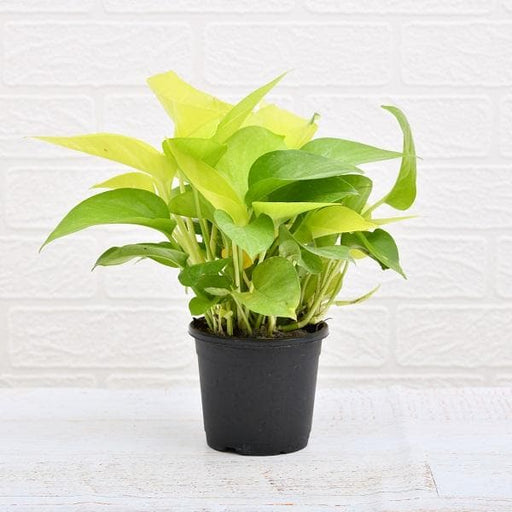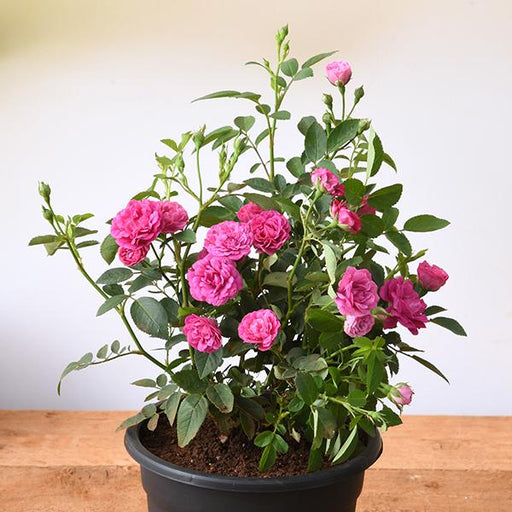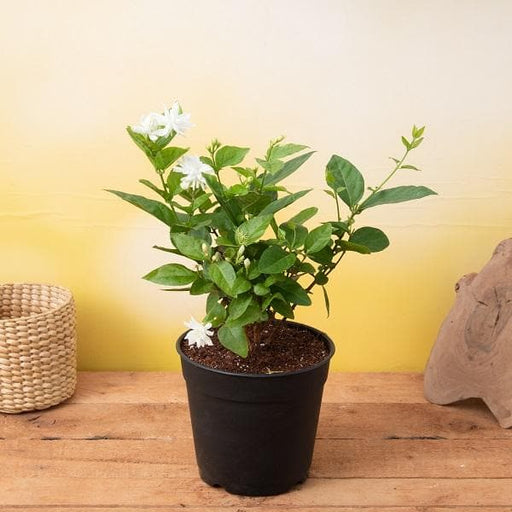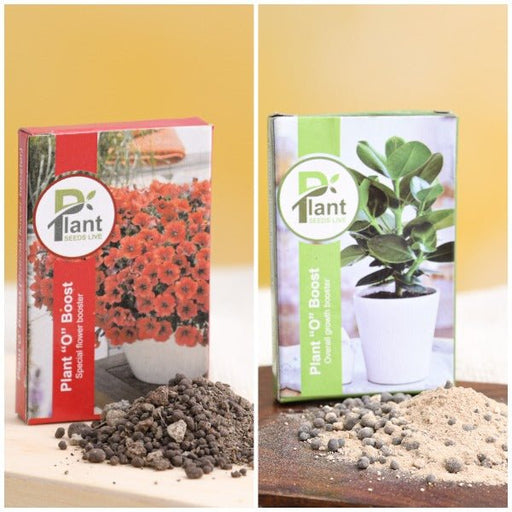
Tilia platyphyllos
(MRP Inclusive of all taxes)
- Shipping ₹79 for entire order
- Dispatch in 7 days
- Country of origin: India

(MRP Inclusive of all taxes)
 Save 29%
Save 29%
Air Purifier Money Plant with Pot The Air Purifier Money Plant, also known as Pothos or Epipremnum aureum, is a stunning indoor plant that...
View full details
 Save up to 15%
Save up to 15%
Peace Lily, Spathiphyllum - Plant The Peace Lily, scientifically known as Spathiphyllum, is a stunning houseplant celebrated for its elegant white...
View full details
 Save 25%
Save 25%
Jasminum sambac, Mogra, Arabian Jasmine - Plant Jasminum sambac, commonly known as Mogra or Arabian Jasmine, is a fragrant flowering plant...
View full details
 Save 18%
Save 18%
Combo Constituents Includes the Parijat Tree (Night-Flowering Jasmine), a culturally significant plant with fragrant flowers. Description The Pari...
View full details
 Save 25%
Save 25%
Miniature Rose, Button Rose (Any Color) - Plant The Miniature Rose, also known as the Button Rose, is a charming and compact flowering plant that ...
View full details Save 25%
Save 25%
Damascus Rose, Scented Rose (Any Color) - Plant The Damascus Rose, also known as Rosa damascena, is a timeless symbol of beauty and romanc...
View full details
 Save 17%
Save 17%
Beautiful Fragrant Mogra, Arabian Jasmine Plant with Pot The Beautiful Fragrant Mogra, also known as Arabian Jasmine (Jasminum sambac), is...
View full details Save 15%
Save 15%
Pack of Vermicompost and Neem Cake for House Plants Transform your indoor garden with our premium Pack of Vermicompost and Neem Cake, spec...
View full details
Pack of Plant Growth and Flower Boosters Unlock the full potential of your garden with our Pack of Plant Growth and Flower Boosters! This ...
View full details Save 38%
Save 38%
Combo of Jeevamrut and Neem Raksha for Easy Growth and Protection of Houseplants Transform your indoor garden with our exclusive combo of ...
View full details Save 22%
Save 22%
Plant Nutrients Kit (Pack of 16) for a Healthy Garden Transform your garden into a lush paradise with our Plant Nutrients Kit, featuring 1...
View full details Save 16%
Save 16%
Combo of Top Plant Fertilizers Elevate your gardening game with our exclusive Combo of Top Plant Fertilizers, featuring two bags of premiu...
View full details Save 24%
Save 24%
Pack of 4 Additives to Make Soil Healthy and Nutrient Rich Transform your garden into a thriving ecosystem with our Pack of 4 Additives de...
View full details Save 30%
Save 30%
Transform your gardening experience with our premium Combo of Perlite and Vermiculite. This unique blend is designed to enhance soil aeration and ...
View full details Save 27%
Save 27%
Combo of 2 Vermicompost and Cocopeat - Enrich Your Soil Naturally! Transform your garden into a thriving ecosystem with our Combo of 2 Ver...
View full details
 Save 35%
Save 35%
Best 6 Plants for Perfect Indoor Garden Transform your living space into a lush oasis with our curated collection of the Best 6 Plants for a...
View full details
 Save up to 50%
Save up to 50%
Mini Succulent Garden Pack Transform your space with our Mini Succulent Garden Pack, featuring a delightful collection of 4 any variety beautiful s...
View full details
 Save 30%
Save 30%
5 Best Fragrant Plants Transform your garden or indoor space into a fragrant paradise with our curated selection of the 5 Best Fragrant Plants. Th...
View full details
 Save 24%
Save 24%
Set of 2 Bonsai Looking Grafted Adeniums Transform your indoor or outdoor space with our exquisite Set of 2 Bonsai Looking Grafted Adenium...
View full details Save 45%
Save 45%
Top 4 Die Hard Succulents Pack Transform your indoor or outdoor space with our Top 4 Die Hard Succulents Pack, featuring a curated selecti...
View full details
 Save 30%
Save 30%
5 Best Indoor Plants Pack Transform your living space into a lush oasis with our '5 Best Indoor Plants Pack.' This carefully curated collection fe...
View full details
 Save 25%
Save 25%
Set of 4 Evergreen Air Purifier Plant Pack Transform your indoor space into a lush, green oasis with our Set of 4 Evergreen Air Purifier Pla...
View full details| SrNo | Item Name |
|---|---|
| 1 | Tilia platyphyllos |
Tilia platyphyllos, commonly known as the Large-leaved Lime or European Lime, is a majestic deciduous tree native to Europe. Renowned for its broad, heart-shaped leaves and fragrant yellow flowers, this tree can reach heights of up to 40 meters. Its dense canopy provides excellent shade, making it a popular choice for parks and urban landscapes. The Large-leaved Lime is not only aesthetically pleasing but also plays a vital role in supporting local ecosystems.
This tree is celebrated for its ecological benefits, including its ability to improve air quality and provide habitat for various wildlife species. The Large-leaved Lime is also a symbol of strength and endurance, often found in historical sites and ancient forests across Europe. Its wood is prized for its workability and is commonly used in carpentry and musical instruments.
One of the most remarkable features of Tilia platyphyllos is its ability to thrive in a variety of soil types, making it adaptable to different environments. Additionally, its flowers attract bees and other pollinators, contributing to biodiversity. The tree's longevity, often living for over 100 years, makes it a lasting addition to any landscape.
Tilia platyphyllos plays a crucial role in carbon sequestration, helping to mitigate climate change. Its extensive root system improves soil structure and prevents erosion, while its canopy provides habitat for numerous species. By planting Large-leaved Limes, communities can enhance urban biodiversity and contribute to a healthier environment.
The Tilia platyphyllos, or the large-leaved lime tree, is like the gentle giant of the forest. With its broad, heart-shaped leaves that can grow up to 15 cm wide, it’s the tree equivalent of a cozy blanket. This tree can reach heights of 30 meters, providing ample shade for picnics and daydreaming. Its bark is smooth and gray, giving it a sophisticated look, while its fragrant flowers attract bees like a magnet. If trees had personalities, this one would be the friendly neighbor who always offers a cup of sugar.
This tree thrives in rich, moist soils, often found in deciduous forests across Europe. Think of it as the tree that loves a good spa day—plenty of water and nutrients are its idea of paradise. It prefers sunny spots but can tolerate a bit of shade, making it the versatile friend who can adapt to any social situation. Whether it’s a bustling park or a serene woodland, the Tilia platyphyllos is always ready to show off its leafy glory.
The large-leaved lime tree is not just a pretty face; it has a variety of uses that make it the Swiss Army knife of the tree world. Its wood is prized for furniture making, while its flowers are harvested for herbal teas that can soothe even the most frazzled nerves. The tree’s leaves can be used for fodder, making it a favorite among livestock. So, whether you’re sipping tea or lounging on a wooden chair, you can thank this tree for its many contributions to your comfort.
If you’re looking for a tree that grows faster than your neighbor’s gossip, the Tilia platyphyllos is your go-to. This tree can grow up to 60 cm a year under ideal conditions, making it a popular choice for those who want a quick shade solution. It’s like the overachiever of the tree world, always striving to reach new heights. Just be sure to give it enough space to spread its branches; it doesn’t like to feel cramped, much like a cat in a too-small box.
Pruning the Tilia platyphyllos is like giving it a stylish haircut—necessary for its health and aesthetics. Regular pruning helps maintain its shape and encourages new growth, ensuring it remains the belle of the botanical ball. The best time to prune is in late winter or early spring when the tree is still in dormancy. Just remember, a little snip here and there goes a long way; you don’t want to give it a buzz cut!
Like any good drama, the Tilia platyphyllos has its share of villains. Aphids, scale insects, and caterpillars can be pesky little intruders, but fear not! With a little vigilance and perhaps a sprinkle of organic insecticide, you can keep these pests at bay. Think of it as a game of whack-a-mole; just when you think you’ve got one under control, another pops up. But with a little patience, your tree will remain healthy and happy.
The Tilia platyphyllos is generally a robust tree, but it’s not immune to the occasional sniffle. Fungal infections and leaf spot diseases can occasionally plague it, but with proper care and attention, you can keep your tree in tip-top shape. Regular inspections and good air circulation are key—think of it as giving your tree a wellness check-up. After all, a healthy tree is a happy tree, and we all want our leafy friends to thrive.
If you’re looking to add a touch of elegance to your garden, the Tilia platyphyllos is the perfect candidate. Its majestic stature and lush foliage make it a stunning focal point in any landscape design. Whether you’re creating a serene park or a vibrant backyard, this tree can elevate the aesthetic like a cherry on top of a sundae. Just be sure to give it enough room to spread its branches; it doesn’t like to be crowded, much like a diva at a party.
you get a beautiful tree, and they get a cozy home. Who knew being a tree could be so rewarding?
The Tilia platyphyllos has made its mark in various cultures, often symbolizing love and fidelity. In ancient times, it was revered as a sacred tree, and its wood was used to carve intricate sculptures. Today, it continues to inspire artists and poets alike. So, if you’re looking for a tree that’s not just a pretty face but also a cultural icon, look no further. This tree has stories to tell and a legacy to uphold.
Caring for a Tilia platyphyllos is like nurturing a friendship; it requires attention and love. Regular watering, especially during dry spells, and mulching to retain moisture are essential. Fertilizing in spring can give it a boost, ensuring it remains vibrant and healthy. Just remember, this tree thrives on companionship, so don’t let it feel lonely in your garden. With a little TLC, your Tilia platyphyllos will flourish, becoming the envy of all the other trees in the neighborhood.
Tilia platyphyllos, or the large-leaved lime, is a deciduous tree known for its broad, heart-shaped leaves and fragrant yellow flowers. It’s like the tree version of a charming, chatty neighbor who always has a story to tell—perfect for parks and gardens!
This tree loves a good climate! You’ll find Tilia platyphyllos thriving in temperate regions of Europe, particularly in rich, moist soils. It’s like the tree equivalent of a sunbather, soaking up the rays while enjoying a cool breeze!
Tilia platyphyllos can reach heights of 20 to 40 meters, making it a towering presence in any landscape. Think of it as the gentle giant of the tree world, providing shade and a sense of grandeur wherever it stands!
This tree isn’t just a pretty face! Tilia platyphyllos offers shade, supports local wildlife, and its flowers attract bees, making it a pollinator’s paradise. It’s like the ultimate multitasker, juggling beauty and ecological benefits with ease!
Absolutely! Tilia platyphyllos is relatively low-maintenance, requiring minimal pruning and enjoying a good drink of water. It’s the tree that doesn’t demand much but gives back plenty—like a friend who always brings snacks to the party!
This tree can live for over 100 years, making it a long-term investment in your garden. It’s like the wise old sage of the forest, sharing stories of the past while standing tall through the ages!
Yes, Tilia platyphyllos is surprisingly resilient and can tolerate urban pollution. It’s like that friend who thrives in chaos, bringing a touch of nature to the concrete jungle while filtering the air like a pro!
While generally hardy, Tilia platyphyllos can attract aphids and scale insects. But fear not! A little vigilance and some natural predators can keep these pesky visitors at bay. It’s like having a bouncer for your garden!
Propagation is a breeze! You can grow Tilia platyphyllos from seeds or cuttings. Just plant them in well-drained soil, give them some love, and watch them grow. It’s like starting a new friendship—just add water!
The wood of Tilia platyphyllos is lightweight and easy to work with, making it popular for carving and furniture. It’s like the versatile friend who can adapt to any situation, whether it’s a cozy chair or a stunning sculpture!
Yes, the flowers of Tilia platyphyllos are edible and can be used to make tea or added to salads. They’re like the culinary surprise in your garden, offering a delightful flavor and aroma that can elevate your dishes!
The best time to plant Tilia platyphyllos is in early spring or fall when the soil is moist and temperatures are mild. It’s like planting a new adventure—just make sure the conditions are right for a successful start!